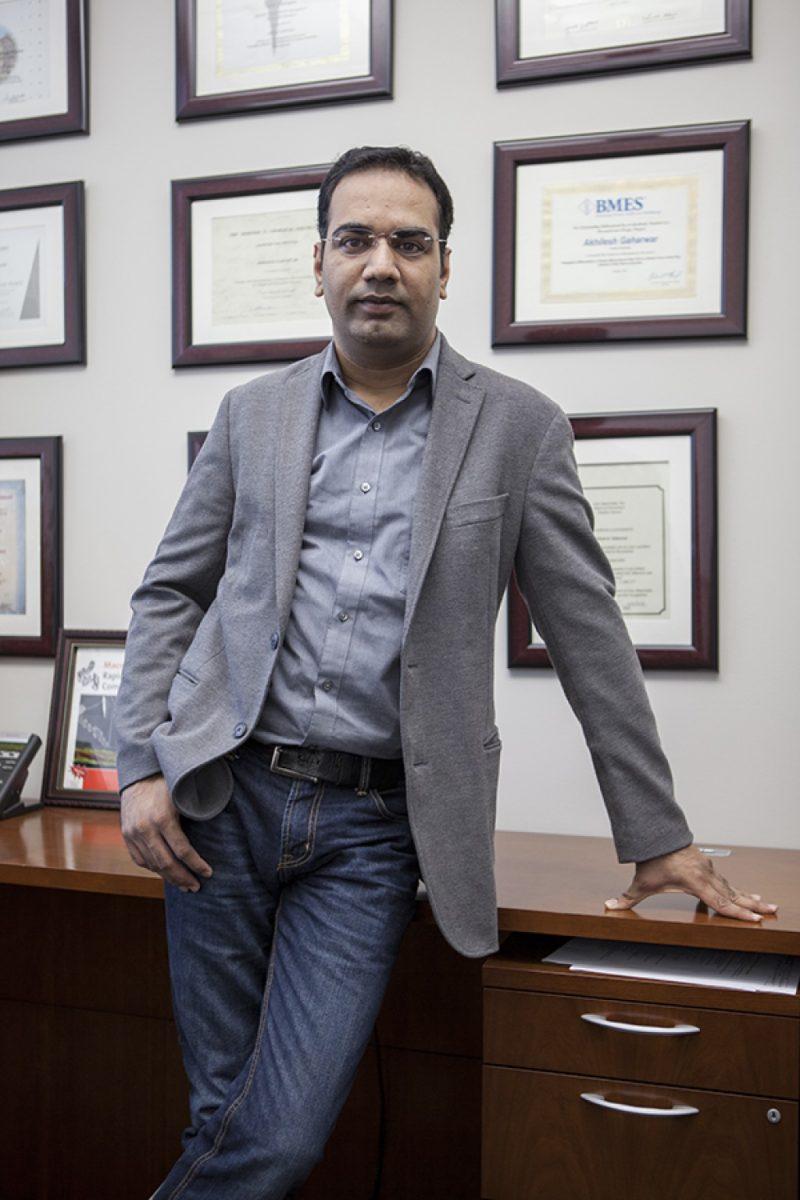A joint Texas A&M-MIT research team is developing an injectable treatment that soldiers could use to treat wounds on the battlefield. Akhilesh Gaharwar, assistant professor in the Department of Biomedical Engineering at Texas A&M, sits down with news reporter Wade Feielin to discuss the treatment.
THE BATTALION: What is the treatment and how does it work?
GAHARWAR: Our work focuses on hemorrhage application. Hemorrhage is one of the leading causes of death in battlefield injuries, so we are mostly focusing on designing materials that can stop it. We are trying to develop materials that can be easily injected and can promote clotting. Once injected, the material should promote clotting in that particular space and stop the bleeding. This treatment can provide some time to that wounded soldier so they can make it to a medical facility. This is also applicable to surgical wounds where you accidentally cut blood vessels. The material for introducing clots uses “thrombin,” or a fibrin-type material, which are already present in our body. In our case, we are not using these materials because if they flow inside the blood stream then they can result in formation of clots at any time and eventually heart attack and so on. We are basically designing synthetic materials from gelatin and nanoparticles, and are not using any thrombin. The nanoparticle that we are actually using is very unique scientifically — it is 30 nanometers in diameter and 1 nanometer thick. This unique shape and surface charge allows the nanoparticle to interact with different components in the blood.
THE BATTALION: What was the inspiration behind developing this treatment?
GAHARWAR: This project started with funding from the Department of Defense. We had a goal in our mind that we wanted to make something that can be easily injected and can prevent clotting because this is a very challenging problem in battlefield injuries. Previously in battlefields, soldiers were getting injured because of bullets or other factors. These days, if we tried to follow the news in Iraq, Afghanistan, Syria and so on, we can see that a lot of the wounds soldiers get are due to different materials and [levels of] sharpness. There are a lot of human bombs or jihadis, and they carry a lot of sharp objects like nails, ball bearings and so on. With these materials, you don’t get a normal kind of wound. It’s very drastic. It ruptures blood flow and leads to fatality. We basically want to make something that a soldier can carry with himself. If he gets wounded and there’s no one nearby, he can just take a needle or syringe loaded with our material and inject it into the wound site.
THE BATTALION: What challenges have been faced in developing the treatment?
GAHARWAR: One of the problems was simply designing the injectable materials. Normally gelatin or any kind of polymer can be difficult to inject. When we tried to start using this nanoparticle, everything seemed to work perfect. Also, the science behind this material is very unique — nobody is working on these type of materials. We have a range of different applications that no one has tried to explore. For example, the two-dimensional particle I mentioned is very unique and actually we don’t know exactly how it interacts with the biological entities such as proteins or cells. We have shown that it interacts with blood in a very nice fashion. In a similar study, we have shown that it can interact with stem cells and induce bone formation.
THE BATTALION: What are your expectations for the future?
GAHARWAR: In the future, as we release this technology in market, we aspire to develop something that we inject in our body that can start the self-healing process. Right now, what we have designed can stop clotting and can degrade in a month’s time. Basically, we want to put proteins or other factors into these gels so we can call other body systems. For example, we can attract blood vessels so we can initiate the healing process. A treatment such as this would ideally eliminate the need for surgery.
Researchers develop injectable treatment for wounded soldiers
November 19, 2014
Donate to The Battalion
Your donation will support the student journalists of Texas A&M University - College Station. Your contribution will allow us to purchase equipment and cover our annual website hosting costs.




















